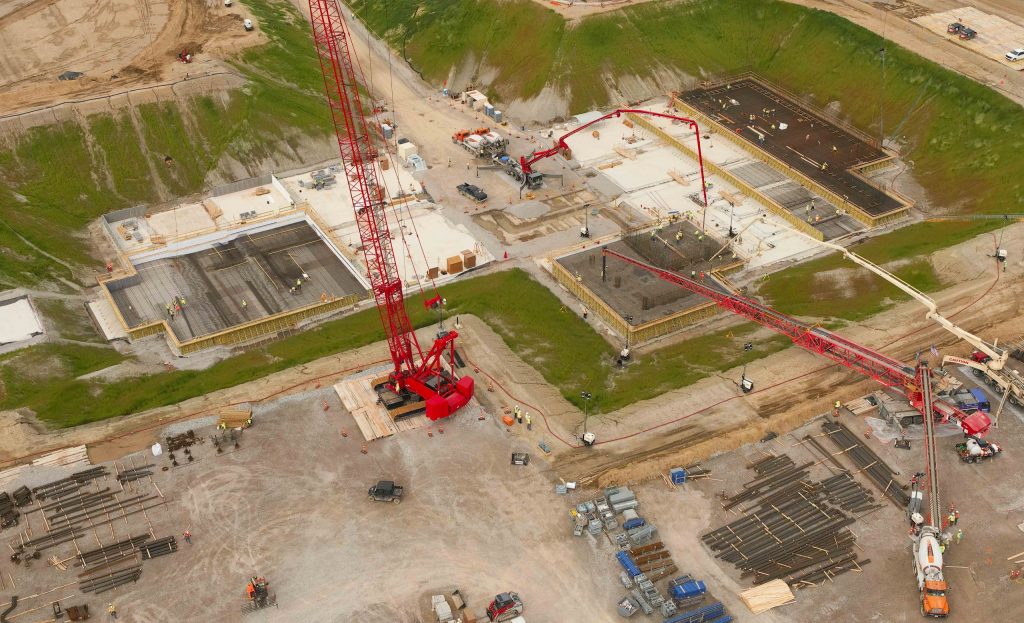The largest private-sector construction project in the history of Ohio hit a major milestone on May 14 as union tradesmen and tradeswomen started to pour more than 1,500 cubic yards of concrete at the Licking County construction site.
Crews began the foundation work on the first semiconductor plant, also known as a fab. It also marks the first Intel fab built in the U.S. in over 40 years.
Jim Evers, Intel Ohio General Manager, wrote in a January blog post, that construction crews had collectively clocked more than 150,000 hours of sitework in which time they moved more than 700,000 tons of limestone and other rock.
Dorsey Hager, the Columbus/Central Ohio Building and Construction Trades Council Executive Secretary-Treasurer, said more ironworkers are scheduled to come to the site and bring the steel out of the ground.
Known as “Ohio One,” the first fab has Ironworkers, Cement Masons, Laborers and Operating Engineers on site, as well as Teamsters hauling the cement, Hager said.
“It looks like the goal is to pour about 460,000-square-yards of cement and concrete,” he added. “There are members of the UA and IBEW bringing utilities in.”
Underground work has already begun on the second fab, called “Ohio Two.”

Concrete is delivered in summer 2023 to Intel’s Ohio One construction site in Licking County, Ohio. Announced in January 2022, the project spans nearly 1,000 acres and is the largest single private-sector investment in Ohio history. (Credit: Intel Corporation)
The project is covered by a National Construction Agreement, similar to a Project Labor Agreement. The project is expected to create at least 7,000 jobs for members of the union building trades.
The work to build Intel’s Ohio operations will be completed by a combination of affiliated members of the C/COBCTC, affiliated members of other Ohio building and construction trades councils and union travelers from other states.
“We need to keep our foot to the pedal and step on the gas to keep doing what we’re doing,” Hager added.
The first phase of Intel’s historic project includes the current construction of two fabs, office buildings, a wastewater treatment plant, a parking garage and other support facilities for a total cost of $20 billion. Three phases are expected to follow where two additional fabs will be built during each subsequent phase.
Intel’s goal is to have chip production ready in 2025.
Once fabs are running, Intel will rely on hundreds of tradesmen and tradeswomen to work onsite each day for general maintenance purposes, Hager said. Future turnarounds have the potential to create thousands of additional union construction jobs.

Leave a Comment